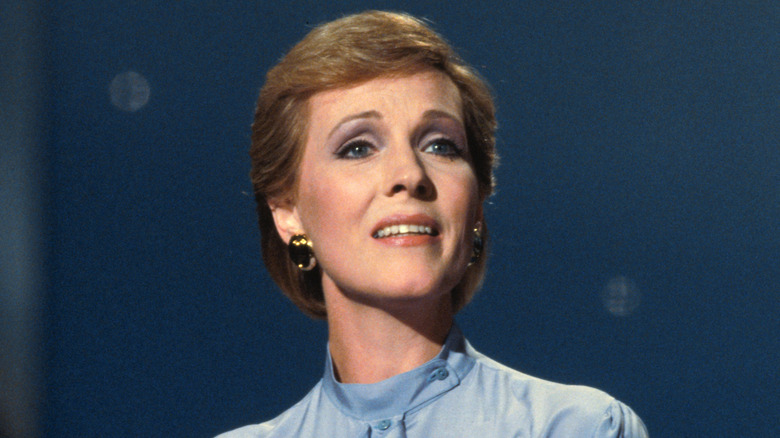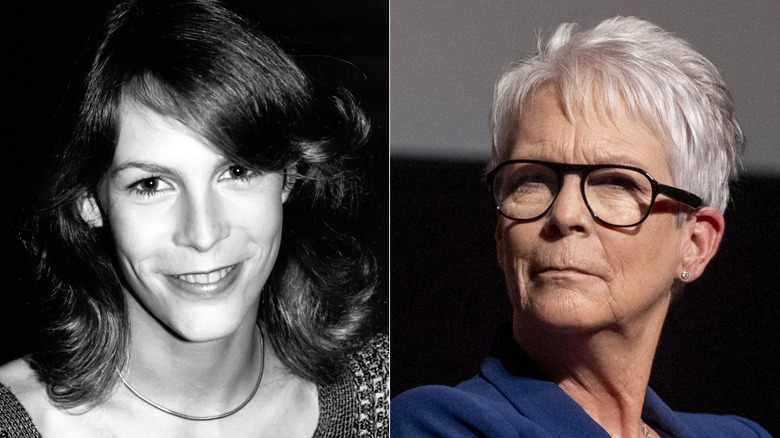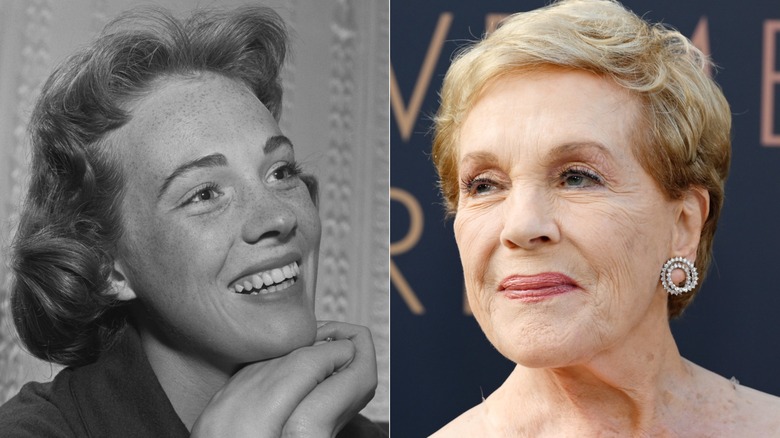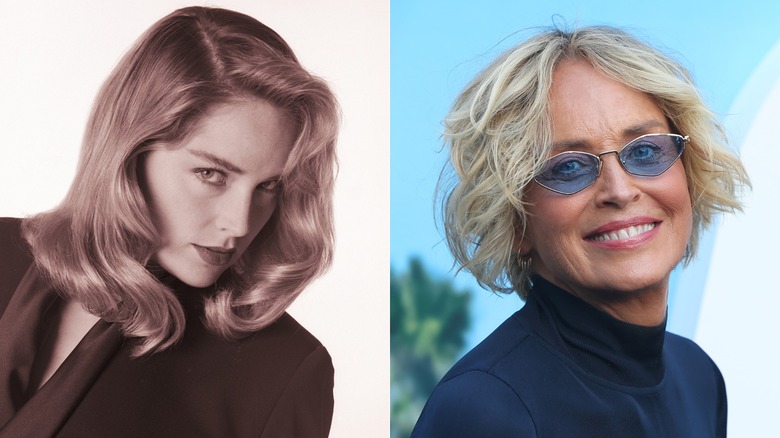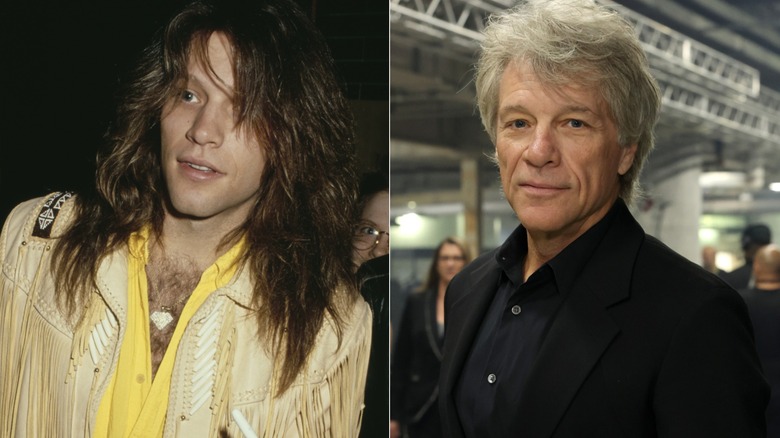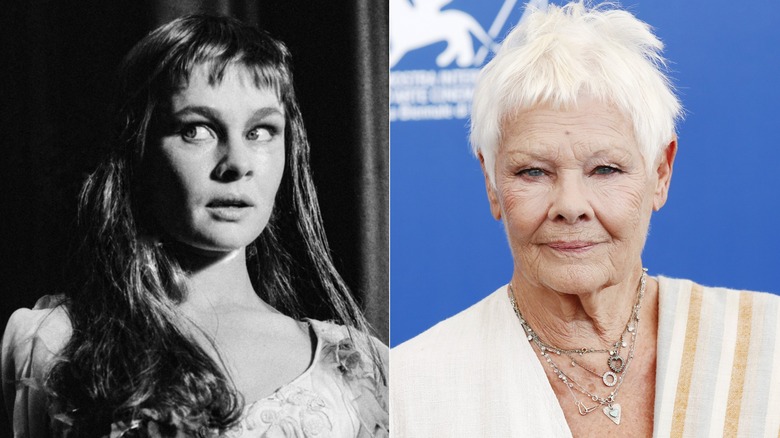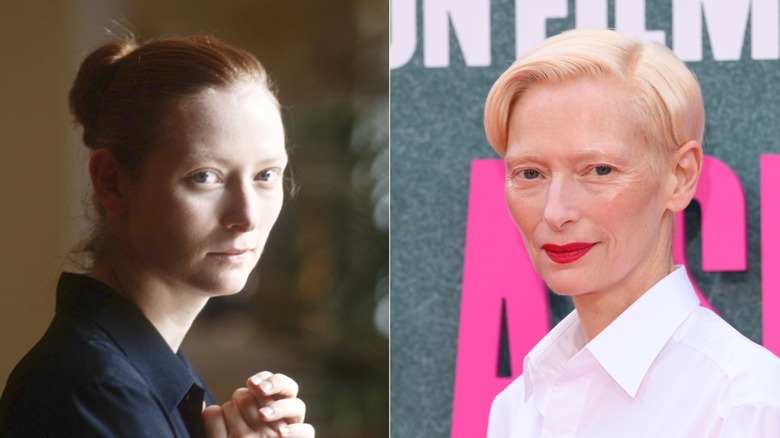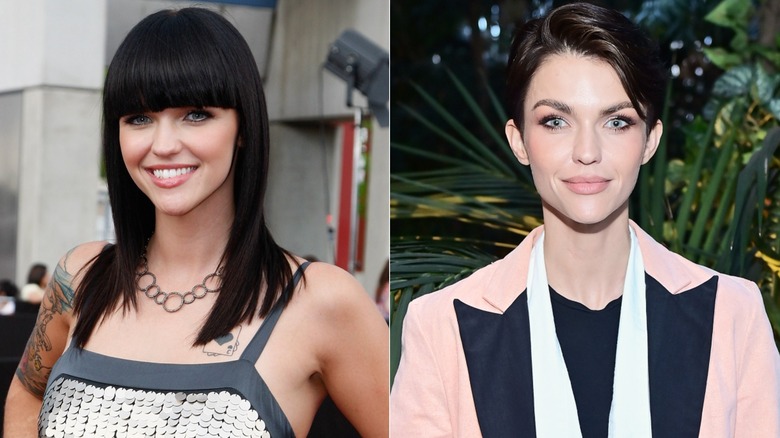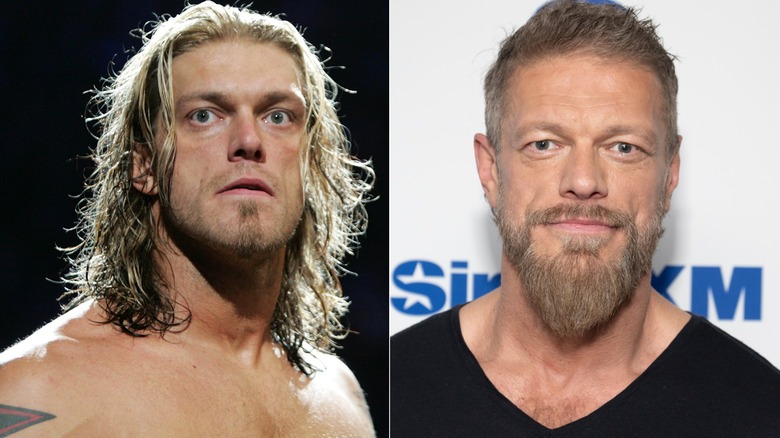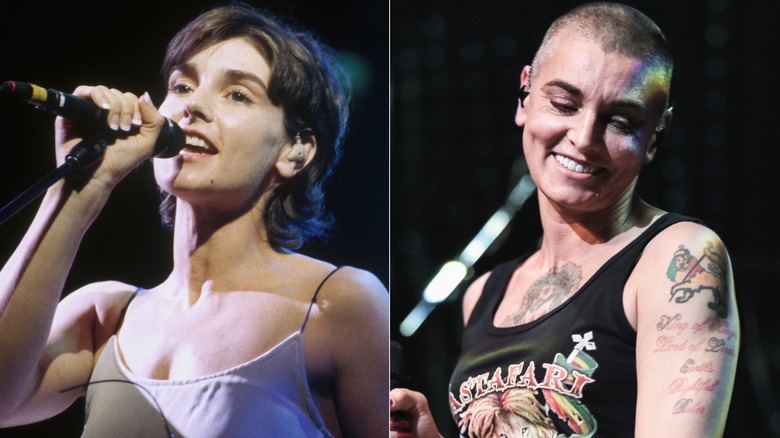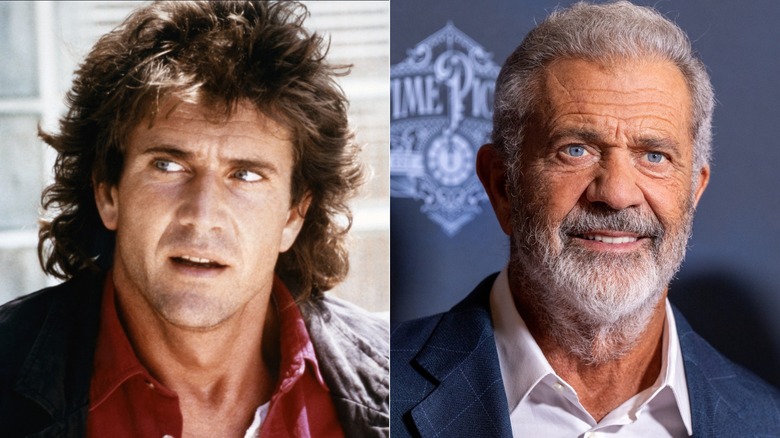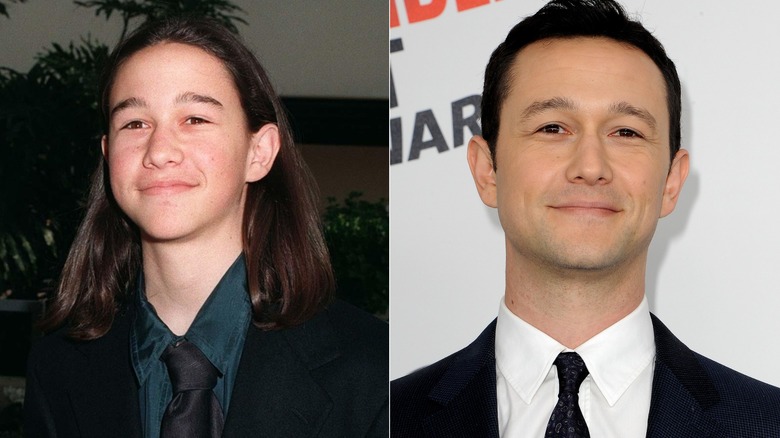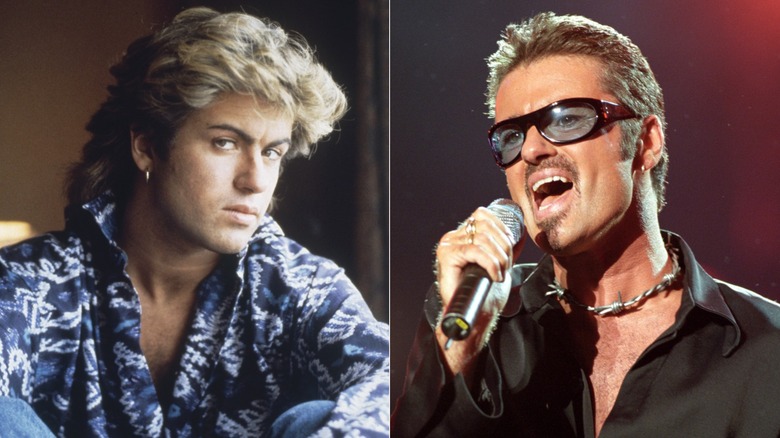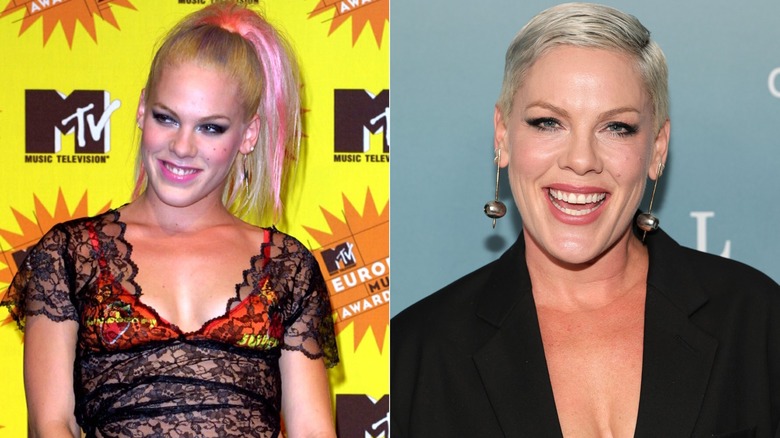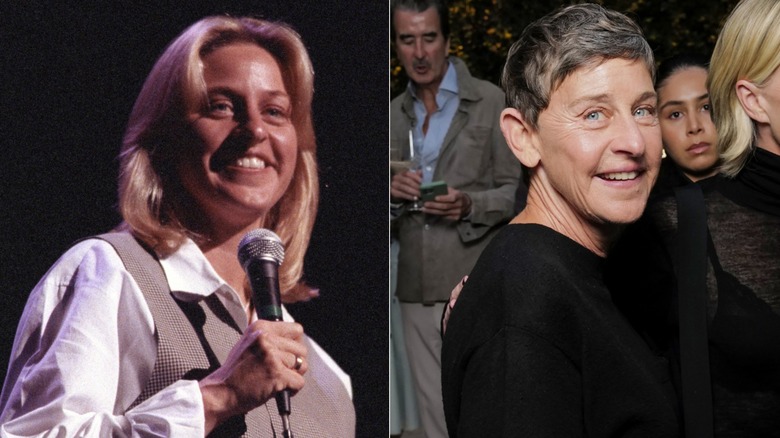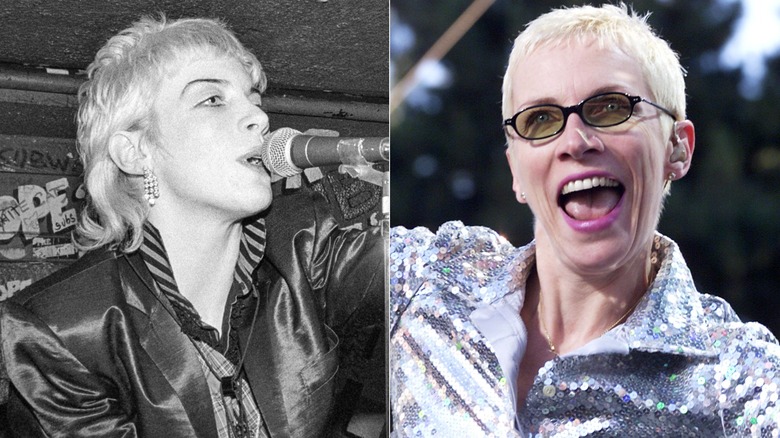Celebrities Who Chopped Their Hair Short And Never Went Back
We may receive a commission on purchases made from links.
There's a reason why certain haircuts outlive red carpets and movie posters. For many stars, a drastic chop is a phase, a publicity stunt, or a role requirement. Grow it out, add some extensions, and the image resets. But then there are the exceptions — the rare few who cut their hair short and never returned.
Short hair has always conveyed a message: The women who chose it in the 1960s were defying a beauty industry still clinging to bouffants. By the '90s, a pixie or close crop could mark one out as fearless or simply unwilling to play by the rules. The figures ahead span Hollywood veterans, television powerhouses, and cultural icons who found a version of themselves they didn't want to put down again. Their short hair isn't a gimmick or an accident. It's the look they kept, the one audiences expect, and often the one that tells you more about them than any press release ever could.
Jamie Lee Curtis' pixie became her forever cut
Jamie Lee Curtis may have experienced plenty of tragedy in her life thus far, but the one constant is the gorgeous silver pixie that she made her own. For her, the choice to cut her hair wasn't about chasing a trend but ditching the exhausting routine so many women in Hollywood are pressured to adopt. As she revealed in an Instagram post, "When I have my hair cut the way I love it and the way it suits me, it gives me the freedom to exist with no make up and very little fuss." While Curtis has grown her hair slightly longer for a role, it's rarely longer than her signature pixie.
Curtis' short style has been a reflection of her outspokenness with Hollywood's obsession with youth and polish. "I have been a vocal critic, and we'll go to my grave with it, that there is a cosmeceutical industrial complex telling women they are not enough" (via People). Her rebuttal to that is simple: No complicated styling, no extra hours in a chair (unless it's for a role, of course). The pixie frees her from the work of hiding behind an image.
What's striking is Curtis' hair has transformed right along with her. Early in her career it read as fresh and sharp, while it later signaled a woman comfortable in her own skin and with nothing left to prove.
Julie Andrews cut her hair short in the '60s and kept it for good
Julie Andrews' short hair began less as a fashion statement and more as a practical choice. She admitted that during the filming of "Mary Poppins," she began cutting her hair shorter to make costuming easier (via Forbes) . What started as backstage convenience quickly became a mainstay, as an ill-fated dye job left her hair even shorter than expected.
In her memoir, "Home Work: A Memoir of My Hollywood Years," Andrews explained, "Unfortunately, there was a mistake in the coloring process, and I ended up with a bright orange mop." She continued, writing, "My hair had to be cut even shorter, and what was left of it was dyed pure blonde." She never really did grow it out again, and it seemed to suit both her career and personality. While many of her contemporaries cycled through styles to keep up with fashion trends, Andrews kept hers stable, giving her a sort of timelessness on screen. Although Andrews underwent a stunning transformation in her own right, the hair still felt inseparable from her name.
Basic Instinct turned Sharon Stone's short blonde locks into her signature
Sharon Stone will forever be linked to one of the most famous scenes in movie history, and the short, razor-sharp bob she wore in "Basic Instinct" is just as much a part of that legacy as the crossed legs. The icy blonde cut became shorthand for her brand of dangerous glamour in the '90s, setting her apart from contemporaries who still relied on long, romantic Hollywood hair.
Unlike so many movie hairstyles that vanish once the cameras stop rolling, Stone kept the style. Over the years she tweaked the length, sometimes adding a little wave or softening the color, but she never retreated back to the long hair she wore early in her career. Moreover, Stone experienced hair loss after her stroke in 2001. While she's since had success regrowing it, she's still kept her locks short.
Jon Bon Jovi shocked fans when he cut his mane and kept it short
Few hairstyles summed up an era like Jon Bon Jovi's big mane in the '80s. It wasn't just the hair; fans expected the leather jackets, the stadium anthems, and the flowing locks blowing in the wind — which is exactly why it came as such a shock when Bon Jovi cut it all off.
Bon Jovi recounted to InStyle, "I cut my hair. I was on the road for 'Keep The Faith' with the whole new look. My hairstyle was on CNN. It was like 'Holy cow, Jon Bon Jovi cut his hair!'" When asked why he went through with the cut, he responded, "I got tired of it. I look back at those pictures and I'm like, 'Oh, God, look at all that hair!'" By that point, he'd already transitioned musically into a more mainstream rock and even country-inspired lane, and his shorter haircut simply matched the evolution.
Judi Dench maintained an everlasting crop
For Dame Judi Dench, the cropped hairstyle is as familiar as her unforgettable name and commanding presence on the stage and screen. The Oscar-winning actor, best known to modern audiences as M in the James Bond franchise, has worn variations of the same short pixie for decades. In fact, it's difficult to dig up photographs of her without it.
Practicality may play a part in the story, but there is still something reassuring about Dench's steady style. As younger actors reinvented themselves with each press cycle, Dench reminds audiences that you can achieve an iconic look by keeping things simple, and she has for decades. Her pixie isn't flashy, but it is enduring — the kind of haircut that, much like her acting, didn't depend on novelty to command attention.
Tilda Swinton has worn it short for a while
Tilda Swinton doesn't just play otherworldly characters — she embodies one. The Oscar-winning actor has forged a career and a chameleonic and stunning stylistic identity built on defying convention. Her hair is part of that spell as it's always sculptural and often styled in a way that blurs gender-binding beauty standards.
Swinton's preference for cropped styles goes back decades, and fashion magazines routinely spotlight her cuts as "avant-garde" or "elegant" because she leans into their architectural qualities. She's also taken advantage of the length's versatility to support causes, like when she sported a bright yellow dye job at a press conference in 2022 to support Ukraine, saying, "It's my honor to wear half of the Ukrainian flag" (per Vogue).
Ruby Rose has never gone back to long hair as her main look
Ruby Rose first experienced international fame when she joined the cast of "Orange Is the New Black," but she was already a model, DJ, and television host in Australia. The short hair eventually became her hallmark after she cut her bangs. Thereafter, it was sometimes a pixie, sometimes a buzz, sometimes a slicked crop. Whichever way she wore it, it was never long.
In an interview with Wired, the star answered the most Googled questions about her, including the inquiry "Why Ruby Rose short hair." She responded in a similar fashion: "Why Ruby Rose long hair?" She then went on to explain that she cut it when she was younger and just fell in love with how it made her feel. "I did it when I was 16, I remember how good it felt, and freeing. I recommend it though — if you have a choice, [if] you feel like doing it."
After years of experimenting with color, the dyes began to take their toll even on her short locks. "I used to experiment with colour a lot more, but once my hair started falling out because I was blonde, black, red, blonde, black, red, repeat, it was like, maybe just stick to cutting it," she admitted to Cosmopolitan, possibly cementing a more conservative short style for good.
Adam Copeland kept the WWE's rockstar-hair era alive before cutting it
For years, Adam "Edge" Copeland embodied the rockstar hair era of professional wrestling well into the 2000s, long after his contemporaries cut theirs for good. His blond mane was part of the spectacle, streaming behind him as he sprinted to the ring and grappled with opponents. Fans associated the hair with the "Rated-R Superstar," a character larger than life.
But as his career evolved, so did his look. When Copeland stepped away from the WWE for a while in 2011, he eventually cut off his long locks. He kept it short, a clear break from the excess of his early persona. When asked why he decided to chop his hair, Wrestling Inc. summarized that Copeland "didn't want to be a 40-year-old with a ponytail and there were no tables, ladders and chairs in his life."
Tons of wrestlers cling to their glory-era looks, but Copeland committed to the shorter style, unofficially ending the long-haired attitude era of the WWE.
Sinéad O'Connor shaved her head and never looked back
Sinéad O'Connor's debut album "The Lion and the Cobra" introduced her voice to the world, but her shaved head was just as striking. In an industry obsessed with glamour and conventional beauty, the Irish singer's buzz cut felt like a rebellion, and it quickly became her defining image.
She didn't do it for shock value. O'Connor explained that she shaved her head in part to resist the music industry's attempts to sexualize her. She recalled to The New York Times that an executive asked her to grow out her hair and dress differently, prompting her to shave it all off in defiance. "I just don't feel like me when I have hair," she told the Times. It was a refusal to play along with the image-making machinery, and it worked, also symbolizing the unflinching honesty of her music.
What's remarkable is that she never abandoned it. Through decades of public ups and heartbreaking downs, O'Connor kept her shaved head, allowing it to become synonymous with her artistry. When people picture her, it's not just the voice they remember, but the radical simplicity of the cut that told the world she would not conform.
Mel Gibson's '90s waves never made a full comeback
In the '80s and early '90s, Mel Gibson's hair was practically a co-star. The wild, wavy mane of "Lethal Weapon" became so popular that men tried to copy it. But after he was done with shooting "The Patriot" in 2000, the long waves were gone — cut down to a neater style that matched his transition into grittier, older roles.
Gibson was aging out of the young action hero image that had defined his career, and the shorter cut echoed the change. The days of the tousled mane were over. Many fans and hair restoration clinics alike have speculated that Gibson may have strayed from his long-haired looks due to a receding hairline, insisting the actor had a hair transplant, though he has was never confirmed this.
Joseph Gordon-Levitt's teen-idol mane became permanently clean cut
Joseph Gordon-Levitt's floppy, boyish hair on "3rd Rock from the Sun" and early teen movies made him a heartthrob in the late '90s. But as his career shifted, he grew tired of his long hair.
On "Late Night with Conan O'Brien," Gordon-Levitt revealed he actually had to get permission to chop his hair while still on "3rd Rock," because the look had become so tied to his character. "They say, 'We like your hair, it's distinct, it's good. There's not kids with long hair on television. So keep your hair long.' And I was like, 'I don't want to,' but eventually they let me," he told O'Brien. By the time he reinvented himself as an indie darling in films like "Mysterious Skin" and later a leading man in "Inception," the floppy locks were long gone.
The only real exception was his 2010 role in "Hesher." He grew his hair out for the character, but even then, it was grimy and unkempt — a far cry from the teen-idol version. Since then, Gordon-Levitt mostly sticks to clean cuts, permanently retiring the swoopy mane.
George Michael traded the Wham! mullet for a sleek crop and stubble
In the Wham! years, George Michael was inseparable from that feathered mullet — all volume and gloss, a poster boy for the archetypal '80s pop look. But by the late '80s, as he launched his solo career, he cut it short and paired it with designer stubble. The transformation was instant: no longer a teen idol, but a suave, sophisticated pop star.
Michael himself reflected on that evolution in an interview with People, noting how he cringed at his old style and how his image had to grow up alongside his music. "I'll start with the blond hair from my Wham! days — that came about because I really didn't want to be me, so the dark, curly hair had to go," he said (via George Michael Forever). The mullet belonged to the bubblegum era, while the cropped hair and stubble defined him through "Faith, Listen Without Prejudice," and stuck for decades. Even as styles changed and trends circled, Michael kept variations of the crop-and-stubble pairing until the end of his career.
Pink has kept her real hair short since her breakout
When Pink burst onto the scene in 2000 with her debut album "Can't Take Me Home," she didn't just have a distinctive voice but a buzzed crop dyed in eye-popping shades. It instantly set her apart in an era dominated by the long-haired pop princesses she was pitted against early in her career, namely Britney Spears and Christina Aguilera. The hair said it all: She wasn't trying to blend in.
Over the years, Pink played with color, mohawks, spikes, and even shaved sides, but the baseline has always been short. That choice aged with her career, with the short length as essential to her brand as her powerhouse vocals and acrobatics on stage. The jury is still out on which color suited her best, but there's no debate about the length: Pink's hair has been short since the start, and she never looked back.
Ellen DeGeneres' haircut has remained relatively unchanged since the '90s
By the time "Ellen" aired in the mid-'90s, its star had begun to settle into the haircut that would define her. Gone were the shoulder-length layers she wore in her stand-up years. In their place, a shorter, blond cut that became her signature 'do as she broke ground on television.
The real shift came in 2009, though, when she cut her hair to an even shorter length most are familiar with today. While her career weathered controversies and reinventions — coming out publicly, shifting from sitcom star to daytime juggernaut — her hair barely budged. The consistency worked in her favor. As her show became a cultural fixture, the platinum blonde pixie served as visual shorthand: dependable, familiar, and unmistakably Ellen. While she's since embraced a natural shade of gray, DeGeneres pixie has stood the test of time — even enduring beyond her downfall from fame and damaged reputation.
Annie Lennox's bright-colored crop became immortal
Few musicians' styles are as inseparable from their sound as Annie Lennox's. When the Eurythmics broke through in the early '80s with "Sweet Dreams (Are Made of This)," Lennox appeared in a suit with striking orange hair cropped close to her head. The look was radical. Part Bowie, part punk defiance, and wholly her own.
When asked by Interview Magazine about her short hair, Lennox said, "I wanted to create something that was quite edgy and belonged to me. ... It was saying that appearance is just temporary, and I want to be as strong as a man." Whether platinum blonde, fiery red, or natural, Lennox kept her hair cropped, letting her style choices push against gender norms and making her instantly recognizable worldwide. Decades after "Sweet Dreams," she still walks stages and red carpets with the same closely cut hair, proof that some looks transcend fashion cycles.
